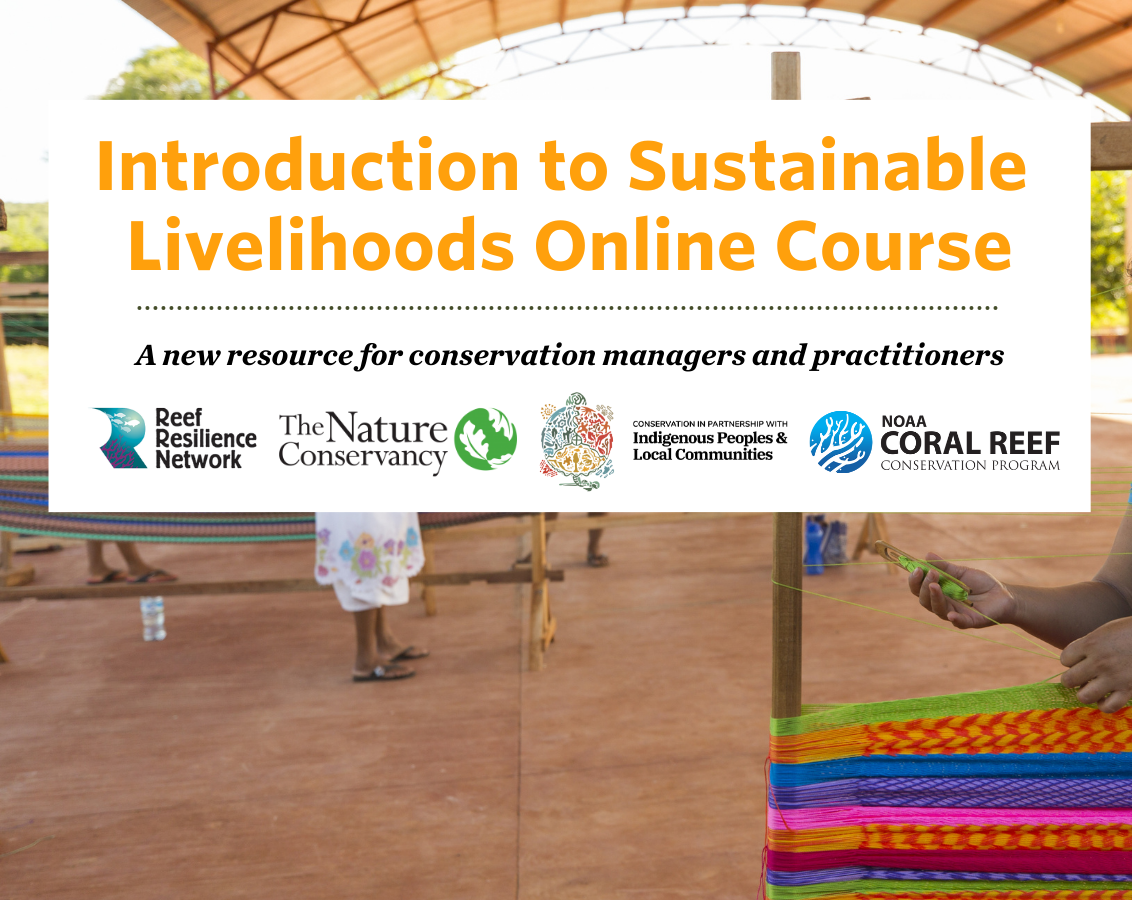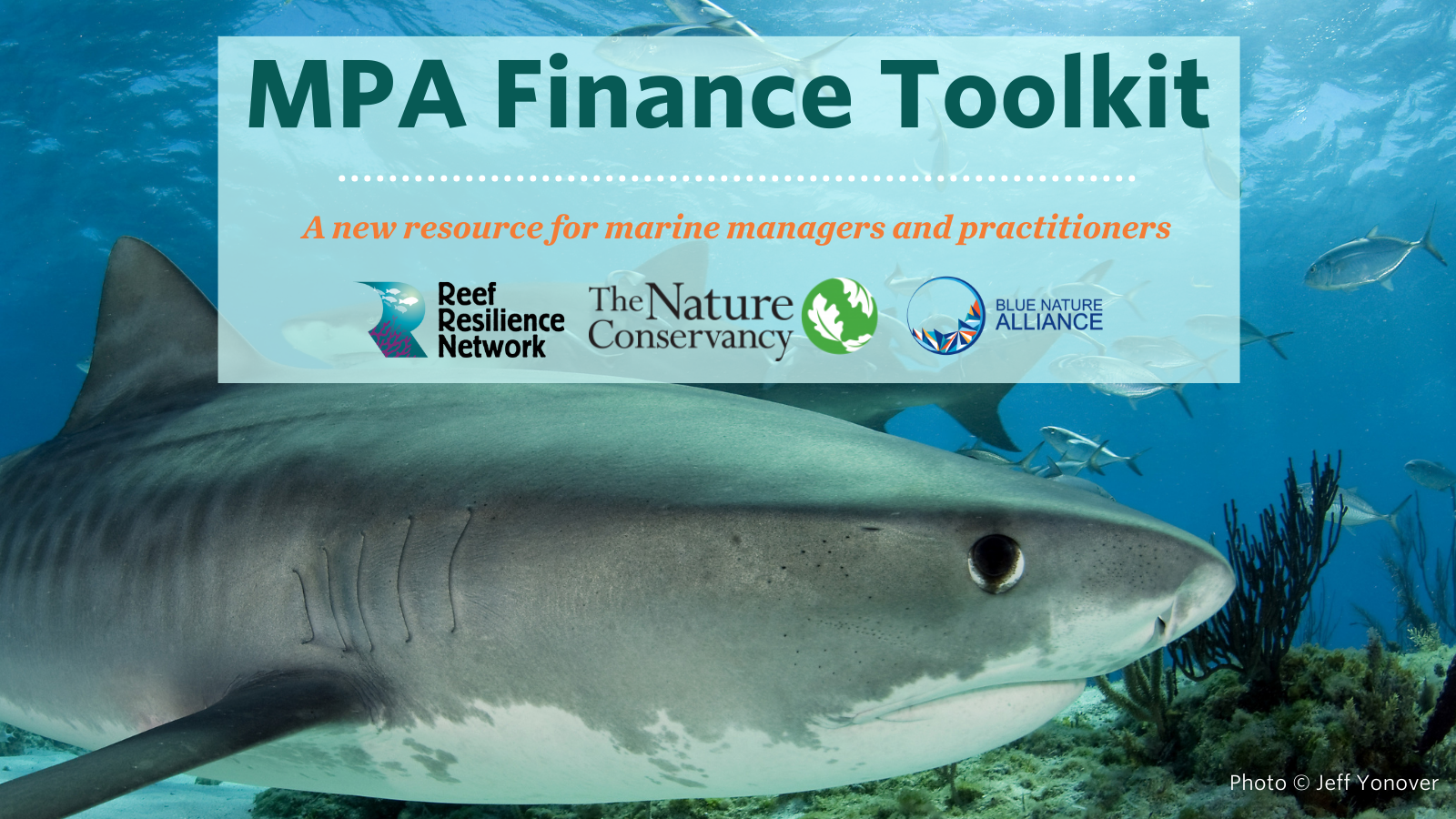25 Years of Urban Runoff Treatment Through Constructed Wetlands
Location
California, USA
The challenge
Stormwater runoff from the southern California cities of Costa Mesa, Newport Beach, Tustin, Lake Forest, and Irvine drains directly into the San Diego Creek watershed and the environmentally sensitive estuarine environment of Upper Newport Bay. Increased urbanization of these areas has resulted in larger areas of paved and impervious land cover—surfaces that cannot absorb or filter rain and therefore increase runoff to waterways. Historically, urban runoff and pollution entering Upper Newport Bay has contributed to eutrophication due to an excess of nutrients (such as nitrogen and phosphorus) entering the water, which threatens human and marine ecosystem health.
The increased nutrient load has resulted in excessive algae growth, acidification of coastal waters, and depletion of dissolved oxygen in the water. These environmental impacts have made the habitat unsuitable for many marine organisms, resulting in die-offs of fish, invertebrates, and other aquatic life. Pollution and poor water quality can also lead to beach and fishing closures; a 2005 study of stormwater runoff impacts from the Santa Ana River (adjacent to San Diego Creek) found that runoff from the river exceeded the limit of safe ocean bathing water standards in California by 500 percent due to the presence of fecal indicator bacteria.
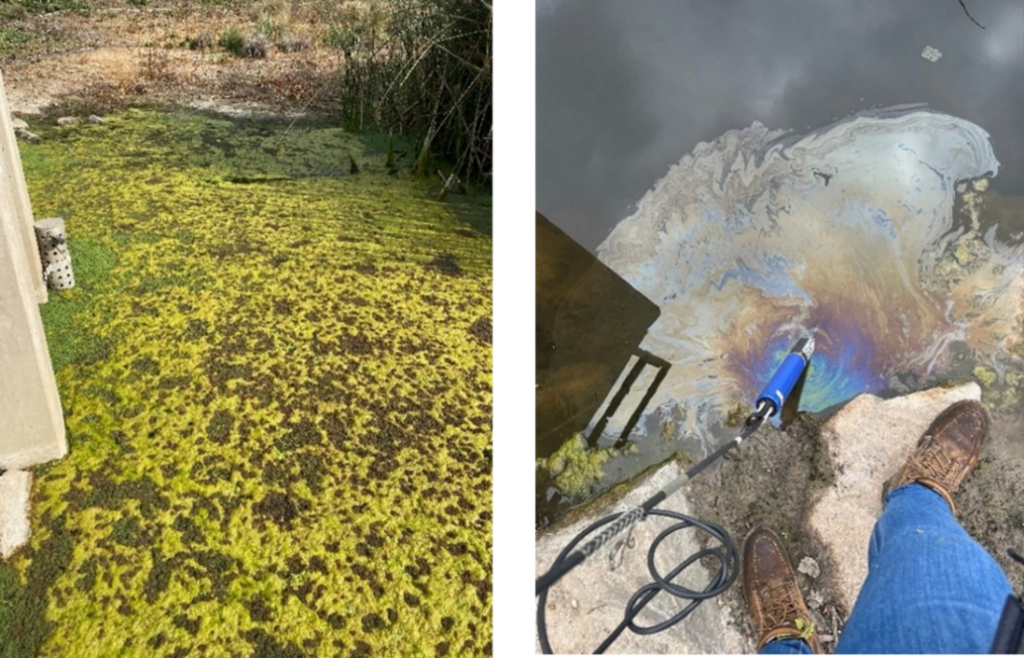
Fast-growing algae, duckweed, and mosquito fern (left) bloom in summer months due to high nutrient inputs. An overgrowth of these organisms can consume oxygen in a water body and block sunlight from reaching underwater plants, making it impossible for aquatic life to survive. Oil slicks (right) are captured by the wetlands. Photos © Mo Wise
Actions taken
The Irvine Ranch Water District (IRWD) provides clean and safe drinking water to customers in the city of Irvine, cleans wastewater to create reclaimed water, and treats urban runoff to protect and enhance the surrounding environment. To reduce pollution from urban runoff, IRWD and its neighboring cities and districts developed a plan to address regional water quality treatment needs using nature-based solutions, as opposed to traditional gray infrastructure (e.g., gutters, drains, storm sewers, retention basins). Treating urban runoff using traditional gray infrastructure is usually expensive due to the large volume of water requiring treatment and can be challenging due to storm drain infrastructure and additional runoff from non-point source pollution.
Nature-based solutions use natural processes associated with plants or microbes that capture and filter contaminated surface water and groundwater before it discharges into the ocean. These solutions have the added benefit of providing and enhancing habitat to support biodiversity while simultaneously promoting recreation (including fishing and tourism), providing educational opportunities, and offering aesthetic benefits over other treatment technologies. IRWD’s plan aims to improve water quality in San Diego Creek and its tributaries by incorporating a type of nature-based solution—constructed water quality treatment (WQT) wetlands—into the city’s stormwater infrastructure. The IRWD plan requires developers to incorporate WQT wetlands into any urban landscape with new development or construction. The wetlands capture and filter storm drain and gutter water before it flows back into the storm drain system.
WQT wetlands are a highly effective strategy for addressing regional water quality treatment needs because:
- WQT wetlands are a proven technology that have been used for more than two decades.
- A network of WQT wetlands can address pollutant sources from existing and future development, as well as pollutants from nonpoint sources.
- WQT wetlands can enhance habitat and natural resources in the watershed.
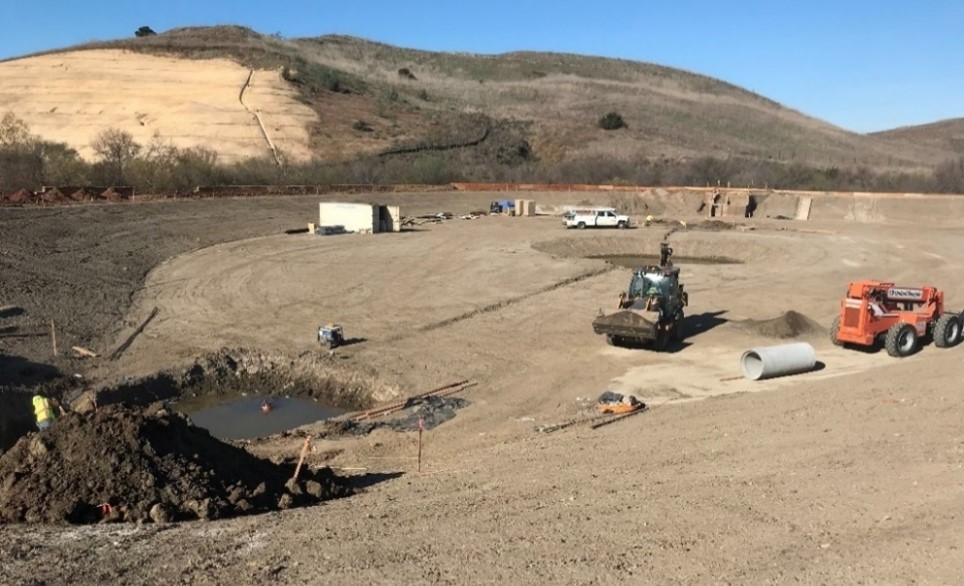
A WQT wetland under construction. WQT wetlands are engineered with elevation changes that allow for channels, ponds, swales, and upland habitat regions. Photo © Mo Wise
As land in the San Diego Creek watershed is developed, IRWD works with developers to incorporate WQT wetlands into the urban landscape as part of the larger urban storm drain system. IRWD follows a detailed procedure to inform the siting and construction of WQT wetlands:
- Site selection. IRWD chooses wetland sites based on the drainage area (e.g., neighborhood, school, shopping mall) where a certain drainage basin is located. Developers are required to incorporate WQT wetlands into their stormwater designs.
- Plant identification. Developers are also required to use native California plants for plantings in the wetlands, including drought-tolerant plants for upland regions, native grasses, and aquatic plants such as bulrush, sedges, and yerba mansa (a perennial herb) in the aquatic area.
- Inspection and management. Once developers construct the basin and plant vegetation, IRWD conducts its own inspection before signing off on the construction plans. After IRWD approves the construction, they assume responsibility for site management and maintenance activities, including weed and sediment removal as needed.
- Monitoring. IRWD monitors their constructed wetlands weekly and collects data on functions such as flow, nutrient, and pollution reduction.
- Outreach and signage. IRWD conducts outreach events, including tours and field trips, to enhance the public’s understanding of how wetlands can help to filter and clean water through natural processes. Additionally, signage around the wetlands helps to illustrate and explain how natural and treatment wetlands work to reduce pollutants reaching waterways.
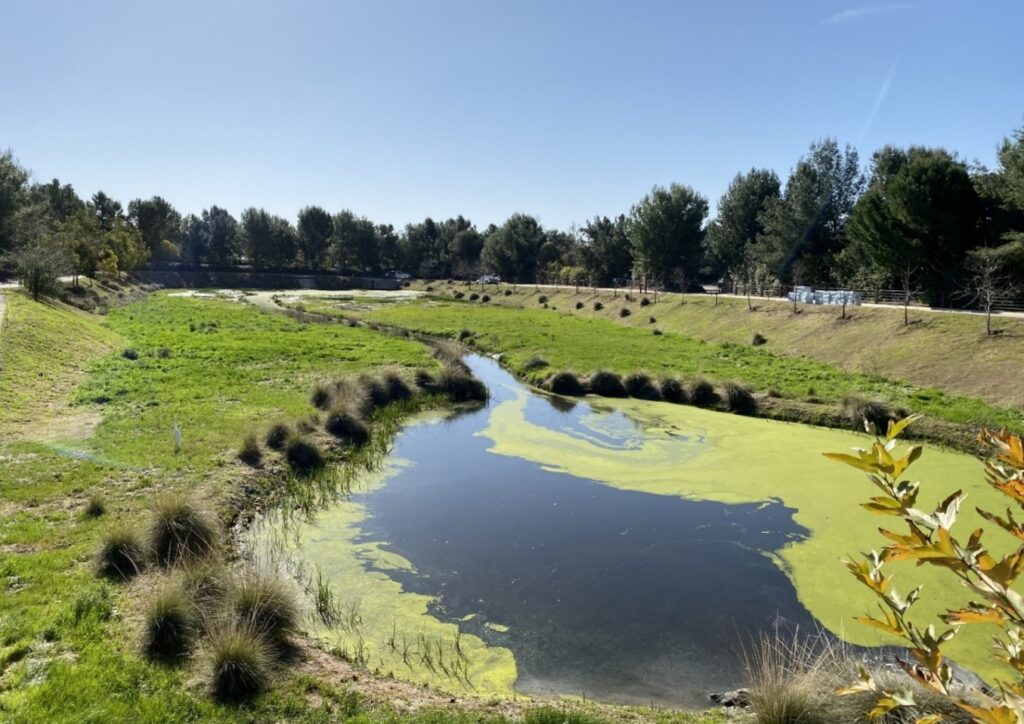
A constructed wetland. Photo © Mo Wise
How successful has it been?
Since IRWD created its first constructed wetland, 46 additional WQT wetlands have been added to IRWD’s service area. Ongoing monitoring of the wetlands as well as their outflow demonstrate that the WQT wetlands are a viable solution for reducing pollution from stormwater runoff. Additional successes include:
- Pollutant reduction. Implementing wetlands upstream throughout the watershed drainage area has led to a reduction in nutrients, sediment, fats/oils/grease, and other pollutants that may have otherwise reached ecologically sensitive areas. From 2021 to 2022, IRWD’s WQT sites removed approximately 51,000 pounds of nitrogen, 2,000 pounds of phosphorus, and 160 pounds of selenium from the San Diego Creek watershed. That’s enough nitrogen to fertilize over 1,000 acres of land!
- Meeting permit requirements. WQT wetlands allow the IRWD to establish credits to maintain its standing within the permitting requirements for pollutant discharge. Because groundwater recharge is not feasible with the soil type and shallow groundwater in the area, wetlands are the best option for IRWD to maintain its permit standing.
Lessons learned and recommendations
- Utilize pilot projects to demonstrate success. IRWD built the first WQT wetland in their system in 1999 in the San Joaquin marsh. Monitoring results from testing outflow demonstrated significant water quality improvements and a reduction in harmful algal blooms. The San Joaquin WQT wetland served as the pilot for implementing the 46 additional wetlands in the San Diego Creek watershed.
- Expand implementation of nature-based solutions. As the population of the city of Irvine and the rest of IRWD’s service area continues to grow, it will be beneficial to continue including WQT sites in development plans to treat urban runoff from new communities. Pairing WQT wetlands with other conservation and management tools can eliminate pollutant discharge into the watershed entirely. These treatment wetlands can also act as a blueprint for additional nature-based solutions that can be incorporated into similar urbanized landscapes.
- Utilize a mix of nature-based solutions and traditional infrastructure. A dual approach of source and regional treatment types helps target various sources of water pollution. In urbanized areas, such as the San Diego Creek watershed, a dual approach is more effective than single-treatment methods at addressing water quality problems.
- Engage with communities. Having the network of urban WQT wetlands accessible to the public has opened the door for conversations with community members, children, teachers, and environmental advocates about the importance of cleaning and maintaining healthy waterways. Including interpretive signage at heavily trafficked wetlands has also increased education on the importance of nature-based solutions.
Funding summary
An estimate of construction costs for these urban treatment wetlands is roughly $200,000 to $250,000 per wetland, which includes site preparation, earthwork, structural work, and finishing work such as plantings and fill disposal. This cost does not account for land acquisition. Developers are responsible for funding the construction of new development project facilities. Regional projects that provide water quality treatment for existing developed areas in the San Diego Creek watershed are considered public expenses and therefore funded by a combination of public funding sources, including state and federal grants, landowner and construction fees, and ratepayer fees.
Lead organization
Partners
Resources

